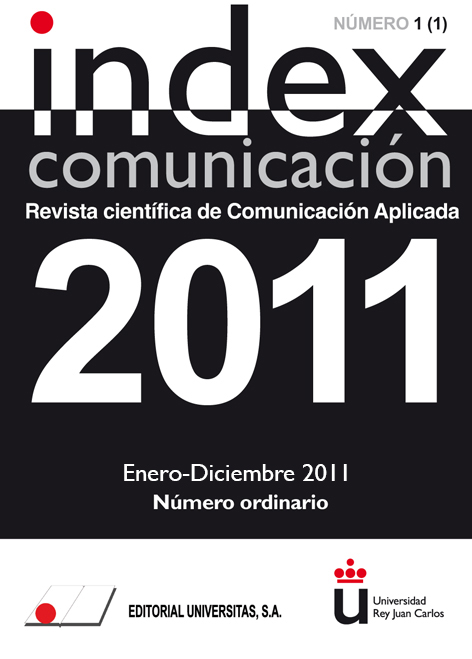Media Ecosystem
Keywords:
ecosistema mediático, nuevos medios de comunicación, periodismo, Internet, redes socialesAbstract
Originally used to describe the relationship between the blogosphere and the mainstream media, the concept of Media Ecosystem was extended to include all media relations. The new forms of interaction with contents and the changes in media consumption motivated by mobility and new interfaces have changed the media and forced them to adapt to a new reality. Starting from the original concept of Ecology, this study tried to identify a set of elements that helps us to clarify the concept of Media Ecosystem, particularly regarding the various factors that influence it. We try to draw a parallel between the two ecosystems –biological and media– seeking ways to integrate the innovations concerning about the media technical development, the tools and the applications that are changing the roles and contents of the old media, and changing the media consumption. Our proposal seeks to integrate some concepts that now are studied in a fragmented and sometimes decontextualized way upon the new media environment.
Metrics
References
AGUADO, J. M y MARTÍNEZ, I. J. La comunicación móvil en el ecosistema informativo: de las alertas SMS al Mobile 2.0. Revista Trípodos, 2008, nº 23.
AGUADO, J.M. Y MARTÍNEZ, I. J. El proceso de mediatización de la telefonía móvil: de la interacción al consumo cultural. Revista Zer, 2006, Vol 11, 20.
AHONEN, T. Tomy Ahonen Almanac 2009: Mobile Telecom Industry Review. Hong Kong: TomiAhonen Consulting, 2009.
BAUMAN, Z. Liquid Modernity. Cambridge: Polity, 2000.
BERGER, K.O Putting the promise of the Information Age into perspective, 1983. Consultado el 02/09/2010 en: http://www.context.org/ICLIB/IC23/Berger1.htm
BOLTER, J. D. y GRUSIN, R. Remediation. Understanding New Media. Cambridge: The MIT Press, 1999.
BRUNS, A. Gatewatching, not gatekeeping: Collaborative online news. Media International Australia Incorporating Culture and Policy. Quarterly Journal of Media Research and Resources, 2003, nº 107, pp. 31-44.
CANAVILHAS, J. Contenidos informativos para móviles: estudio de aplicaciones para iPhone. Revista Textual & Visual Media, 2009, nº 2, pp.61-80.
CARDOSO, G. From Mass to Networked Communication: Communicatio-nal Models and the Informational Society. International Journal of Communication, 2008, nº 2, pp. 587-630.
CASTELLS, M. A Sociedade em Rede. A Era da Informação. Economia, Sociedade e Cultura. Lisboa: Fundação Calouste Gulbenkian, 2002.
CASTELLS, M., FERNÁNDEZ-ARDÈVOL, M., QIU, J. L. & SEY, A. Comunicación móvil y sociedad, una perspectiva global. Madrid: Editorial: Ariel - Fundación Telefónica, 2007.
ELOLA, J. «Los medios deben aparcar su arrogancia» Entrevista: el futuro del periodismo digital Rosental C. Alves, en El País, 5 de septiembre de 2010. Consultado el 12/02/2011 en:
FIDALGO, A. y CANAVILHAS, J. Todos os jornais no bolso: Pensando o jornalismo na era do celular. En Carla Rodrigues (Org.). Jornalismo On-Line: modos de fazer (pp. 96-146). Río de Janeiro: PUC Rio, 2009.
KITTLER, F. A. The History of Communication Media, 1996. Consultado el 30/06/2010 en: http://www.ctheory.net/articles.aspx?id=45,
LAZARSFELD, P. F.; BERELSON, B. y GAUDET, H. The People's Choice: How the Voter Makes Up His Mind in a Presidential Campaign. New York. Duell, Sloan and Pearce, 1994.
LEMOS, A. Cidade e Mobilidade. Telefones celulares, funções pós-massivas e territórios informacionais. Revista Matrizes, 2007, nº 1, pp.121-137.
LUHMANN, N. La improbabilidad de la comunicación. Revista Internacional de Ciencias Sociales, 1981, XXIII. Paris: UNESCO.
MCLUHAN, M. Os meios de comunicação como extensões do Homem. (Understanding Media). S. Paulo: Editora Cultrix, 1969.
NORA, D. La Conquista del Ciberespacio. Barcelona: Ed. Andrés Bello, 1997.
ODUM E.P. y BARRETT G.W. Fundamentals of Ecology. Fifth edition, Belmont, CA: Thomson, 2005.
REINERS, W. A. Complementary Models for Ecosystems. The American Naturalist, 1986, Vol. 127, pp. 59-73.
ROSEN, J. The people formerly known as the audience, 2006. Consultado el 03/11/2010 en:
http://journalism.nyu.edu/pubzone/weblogs/pressthink/2006/06/27/ppl_frmr.html
TANSLEY A.G. The use and abuse of vegetational concepts and terms. Ecology, 1935, nº 16, pp. 284-307.
PEW INTERNET & AMERICAN LIFE PROJECT The Future of Internet III, 2008. Consultado el 25/07/2010 en:
http://www.pewInternet.org/Reports/2008/The-Future-of-the-Internet-III.aspx
PEW INTERNET & AMERICAN LIFE PROJECT Understanding the Participatory News Consumer, 2010. Consultado el 23/07/2010 en:
http://www.pewinternet.org/Reports/2010/Online-News.aspx
WOLF, M. La investigación de la comunicación de masas, Barcelona: Paidós, 1987.
Published
How to Cite
Issue
Section
License
Authors who submit to this journal agree to the following terms:
Authors retain copyright and ensure the magazine's right to be the first publication of the work as licensed under a Creative Commons Attribution-NoComercial 4.0 International License that allows others to share the work with an acknowledgment of authorship of the work and the initial publication in this magazine, with no commercial purpose.
Authors can establish separate additional agreements for non-exclusive distribution of the version of the work published in the magazine (for example, to an institutional repository or publish it in a book), with an acknowledgment of its initial publication in this journal.
It allows and authors are encouraged to disseminate their work electronically (eg, in institutional repositories or on their own website) prior to and during the submission process, as it can lead to productive exchanges, as well as a citation more early and most of the published work (See The Effect of Open Access).















